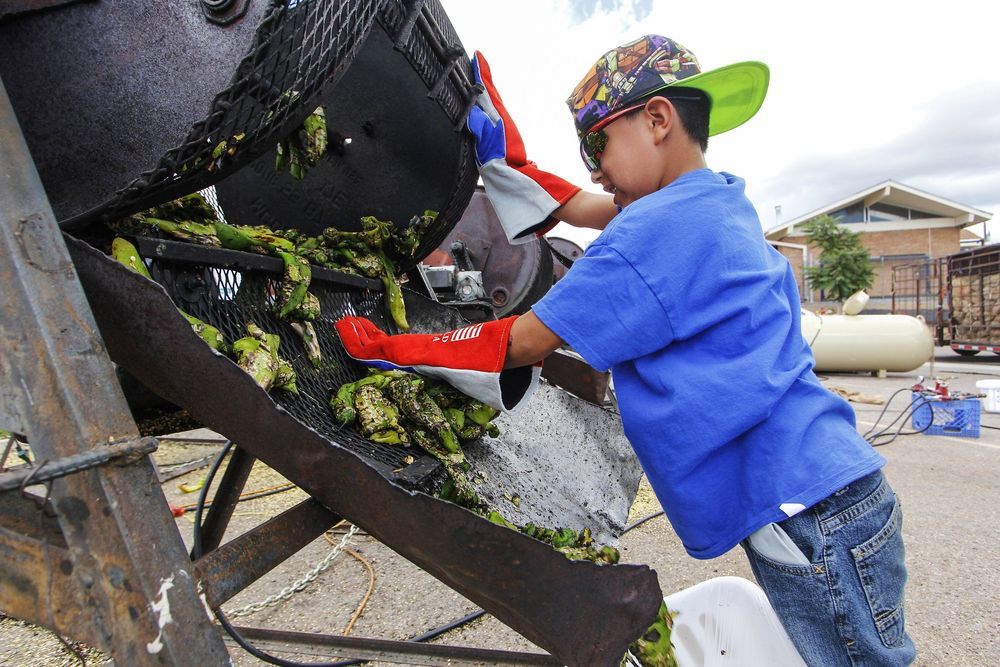Think that robots need to be the size of a dog or even a full-grown person to be exciting? Not so, as the fast-developing field of micro-robotics demonstrates. As it turns out, in some cases the world’s most innovative robots may even be too small for many of us to see.
Get the latest international news and world events from around the world.

An Israeli Scientist Paves the Way to Alzheimer’s Cure, One Algorithm at a Time
Scientists at work in laboratory. Photo: Public domain via Wikicommons.
CTech – When chemistry Nobel laureate Michael Levitt met his wife two years ago, he didn’t know it would lead to a wonderful friendship with a young Israeli scientist. When Israeli scientist Shahar Barbash decided to found a startup with the aim of cutting down the time needed to develop new medicine, he didn’t know that a friend’s wedding would help him score a meeting with a man many want to meet but few do. But Levitt’s wife is an old friend of Barbash’s parents, and the rest, as they say, is history.
One of the joys of being an old scientist is to encourage extraordinary young ones, Levitt, an American-British-Israeli biophysicist and a professor at Stanford University since 1987, said in a recent interview with Calcalist. He might have met Barbash because his wife knew his family, but that is not enough to make him go into business with someone, Levitt said. “I got on board because his vision excited me, even though I thought it would be very hard to realize.”


The past Porton Down can’t hide
I am aware of many “Small Studies” that produced undeniable results.
Tucked away in 7,000 acres of beautiful Wiltshire countryside lies one of Britain’s most infamous scientific establishments. Porton Down, founded in 1916, is the oldest chemical warfare research installation in the world. The tight secrecy which has surrounded the establishment for decades has fed the growth of all sorts of myths and rumours about its experiments. One Whitehall official once remarked that Porton had an image of “a sinister and nefarious establishment”.
The Porton experiments on humans have attracted a good deal of criticism. It is, for example, alleged that the human “guinea pigs’ — drawn from the armed forces and supposedly all volunteers — were duped into taking part in the tests. There are still concerns that the tests have damaged the long-term health of the human subjects.
This week, its work has been thrown into the spotlight once again: an inquest was reopened into the death, in May 1953, of a young airman, Ronald Maddison. He died after liquid nerve gas was dripped on to his arm by Porton scientists in an experiment. The original inquest decided that his death was accidental, but this new inquest will examine fresh evidence and decide if the verdict should stand.

Signaling a ‘new era’ in forensic investigation, a man caught through genetic genealogy gets life in prison for 1987 double murder
In a milestone for forensic criminal investigators, a convicted killer received two life sentences on Wednesday for a 1987 double slaying after becoming the first person arrested through genetic genealogy to be found guilty at trial.
“The conviction and sentencing of William Earl Talbott II marks a new era for the use genetic genealogy for identifying violent criminals since it has now been tested and tried in a court of law,” geneology expert CeCe Moore told ABC News.
William Earl Talbott II was arrested in May 2018 and charged with aggravated murder for the Washington state cold case killings of 20-year-old Jay Cook and 18-year-old Tanya Van Cuylenborg, authorities said. A jury found Talbott guilty last month.

Jack Ma’s $290 Billion Loan Machine Is Changing Chinese Banking
The financial-technology boom that turned China into the world’s biggest market for electronic payments is now changing how banks interact with companies that drive most of the nation’s economic growth. As MYbank and its peers crunch reams of new data from payment systems, social media and other sources, they’re growing more comfortable with smaller borrowers that they previously shunned in favor of state-owned giants.
Jack Ma’s online bank is leading a quiet revolution in the way China lends to small businesses, taking aim at a credit bottleneck that has held back Asia’s largest economy for decades.
Using real-time payments data and a risk-management system that analyzes more than 3,000 variables, Ma’s four-year-old MYbank has lent 2 trillion yuan ($290 billion) to nearly 16 million small companies. Borrowers apply with a few taps on a smartphone and receive cash almost instantly if they’re approved. The whole process takes three minutes and involves zero human bankers. The default rate so far: about 1%.

New Mexico chile plant selected to be grown in space
ESPAÑOLA, N.M. (AP) — It’ll be one giant leap for chile-kind.
A hybrid version of a New Mexico chile plant has been selected to be grown in space as part of a NASA experiment.
The chile, from Española, New Mexico, is tentatively scheduled to be launched to the International Space Station for testing in March 2020, the Albuquerque Journal reports.

Study shows gut microbiota influences skeletal muscle mass and function in mice
An international team of researchers has found that the gut microbiota in mice play an influential role in skeletal muscle mass maintenance and function. In their paper published in the journal Science Translational Medicine, the group describes their experiments with wild and lab-raised mice, and what they found.
Over the past several years, scientists have found that gut microbiota in humans and other animals play a far bigger role in maintaining health than previously thought. In addition to processing food, the gut microbiome plays an important role in immunity and in regulating cholesterol and triglycerides. And imbalances in the gut microbiota have been associated with conditions such as Crohn’s disease, IBS and other inflammatory diseases. Now, the researchers with this new effort have found evidence that suggests the gut microbiome also plays a role in maintaining the right amount of skeletal muscle mass and its function—at least in mice.
Skeletal muscle is one of the three main types of muscle—the other two are cardiac and smooth. Skeletal muscle is very much what it sounds like—the collection of muscles that are connected to bones in the skeleton that control movement, most specifically, the limbs.

Cybersecurity expert arrested in Vegas for creating malware won’t serve any more time
MILWAUKEE (AP) — A British cybersecurity expert credited with helping stop a worldwide computer virus in May 2017 won’t serve any additional time behind bars for creating malware years before he won international acclaim.
U.S. District Judge J.P. Stadtmueller sentenced 25-year-old Marcus Hutchins on Friday in Milwaukee to time served, with a year of supervised release. Stadtmueller said the virus Hutchins helped stop was far more damaging than the malware he wrote.
Hutchins pleaded guilty in May to developing and conspiring to distribute malware called Kronos from 2012 to 2015. Prosecutors dismissed eight charges in exchange for his plea.

Volcanic Eruption Sends Ash Plume 650 Feet Into The Air
On Friday afternoon, a volcano in southern Indonesia erupted, spewing ash as high as 650 feet into the air, according to the country’s National Board for Disaster Management.
The ash from the eruption of Mount Tangkuban Parahu landed as far as 6,500 feet away, reports ABC.
The volcano is situated approximately 18.6 miles north of Indonesia’s third largest city of Bandung in West Java. As of publication, no casualties have been disclosed. However, 9News reports that two individuals were taken to the hospital with “breathing difficulties.”